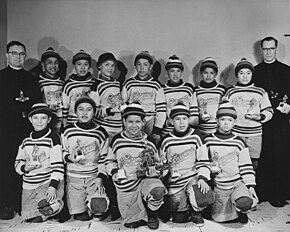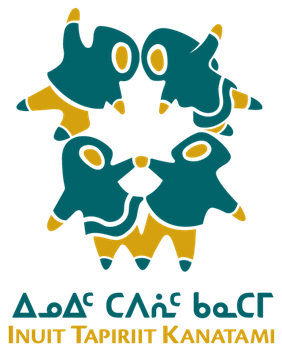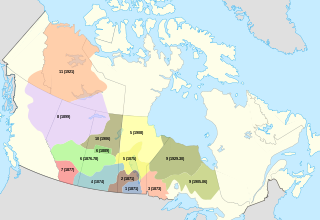Historical background
The historical background listed in the Red Paper goes back to when the Crown established treaties with the Indigenous Peoples. The historical events that this sub section looks at are broad main events that have influenced the grievances listed in the Red Paper.
Treaties
With plans and ambitions for westward expansion, the Dominion of Canada entered negotiations with the Indigenous peoples who would tend for the land. [1] The Crown sought to cede these lands; as expressed by Joseph Howe, the then Secretary of State of Canada, when he talked about the “necessity of arranging with the bands of Indians inhabiting the tract of the country between Thunder Bay and the Stone Fort, for the cession, subject to certain reserves such as they should select, of the lands occupied by them”. [3] While there was never a treaty allowing the cession of reserve land to the federal government, Section 91 of the British North America Act (1867) handed the authority of these reserves to the federal government. [1]
According to the authors of the Red Paper, the treaty negotiations were made from a position of strength, as the Crown was under the impression that Indigenous groups were in weak bargaining positions. [1] Due to the ceding of the land, benefits were promised to Indigenous Peoples, which were meant to be in perpetuity. [1]
While promises were made to Indigenous groups verbally, these promises were not always reflected in the written treaties themselves. These promises created a disparity between what was orally promised and what was transcribed in the treaties. [1] While Treaty 6 said that Indigenous Peoples have the right to pursue hunting and fishing “subject to such regulations as may from time to time be made,” in the negotiations, Lieutenant Governor Morris mentioned that “You are at liberty to hunt as before.” [1]
This disparity was also seen when Indigenous Peoples asked for the supply of medicine chests, and such requests were accounted for in treaties six and seven, however, it was not accounted for in Treaty 8. [1] It must be noted that this medical care was promised, as stated on the commissioner’s report on September 22, 1899. [1]

Residential Schools
An important historical event to keep in mind while assessing the Red Paper is the legacy of Residential Schools in Canada. The residential schools play an important part in understanding the history of Indigenous Peoples in Canada, as one must approach this study from the idea that the past informs the present. These schools started in the 17th century, to being shut down in the 1990s. [4] These schools were mainly run by the churches, and the federal government played a key role in funding these schools. [4] The schools were initially set up to assimilate Indigenous Youth with what was considered mainstream culture, however, they had a whole plethora of negative impacts on communities. [5] Some of the negative impacts experienced by the children forced into the system included "harsh discipline, malnutrition, poor healthcare, physical, emotional and sexual abuse, neglection, and the deliberate suppression of their cultures and languages". [4] In Canada's history, there were a total of 130 residential schools, which were responsible for the deaths of an estimated 6000 children. [5] It must be noted that while the White Paper was written, residential schools in their entirety, hadn't been closed down. [6] When looking at the historical background of the White Paper, one must understand the trauma and the subjugation inflicted on generations of Indigenous Peoples, and how this history was still on-going at the time.
History leading up to the White Paper
The civil rights movements in the United States of America brought the subjugation of minorities to the forefront of public consciousness. [7] Based on these movements, the Canadian federal government started to examine the socio-economic barriers faced by Indigenous Peoples. [7] This led to the government commissioning Harry B. Hawthorn to conduct research on Indigenous communities across Canada. [7] These findings had culminated in the Hawthorn report. Based on his findings, Hawthorn concluded that Indigenous Peoples were "citizens minus" and cited various failures in governance as reasons for the unequal social conditions. [7] His report additionally called for the shut down of any form of "forced assimilation programs". [7] A main form of forced assimilation in Canada could be seen through the Residential Schools. [7]
Based on the report, the government decided to engage in consultation with various Indigenous Communities, and proceeded to amend the Indian Act. [7] Following regional discussions, in 1969, various leaders of Indigenous nations had been called to Ottawa for a meeting with the federal government. [7] Based on the findings of the Hawthorn report, in conjunction with the various discussions that they federal government had with Indigenous Nations, the White Paper was written.
These historical backgrounds played a key role in advising the policies and the advocacies outlined in the Red Paper.





